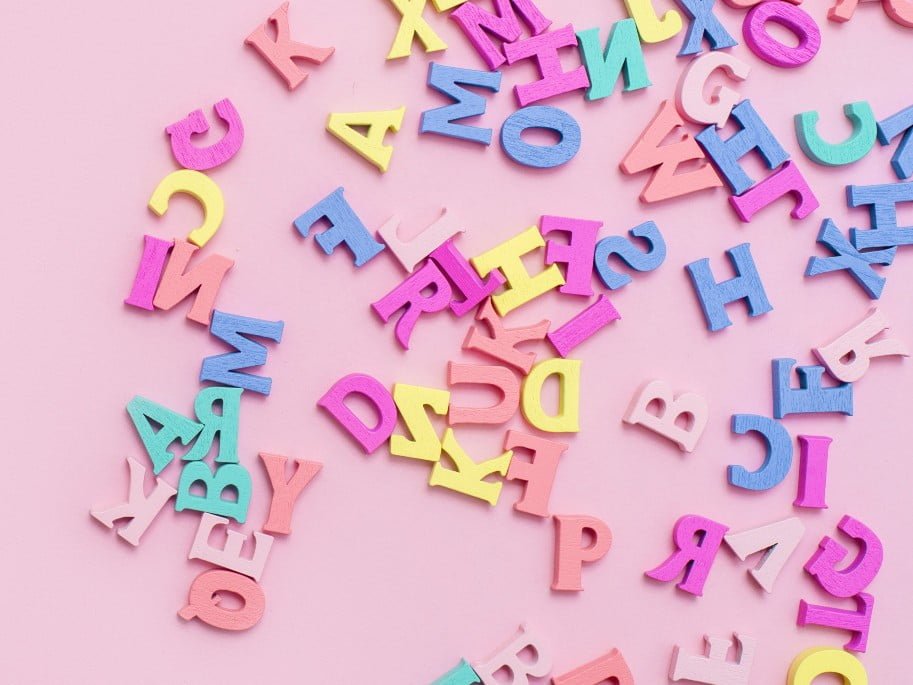Speech gives life to stories. It breaks up long pages of action and description, it gives us an insight into a character, and it moves the action along. But how do you write effective dialogue that will add depth to your story and not take the reader away from the action?
In this article I will be guiding you through seven simple steps for keeping your fictional chat fresh, relevant and tight. As well as discussing dialogue tags and showing you dialogue examples.
Time to talk…
7 Easy Steps For Compelling Dialogue
Getting speech right is an art but, fortunately, there are a few easy rules to follow. Those rules will make writing dialogue easy – turning it from something static, heavy and un-lifelike into something that shines off the page.
Better still, dialogue should be fun to write, so don’t worry if we talk about ‘rules’. We’re not here to kill the fun. We’re here to increase it. So let’s look at some of these rules along with dialogue examples.
“Ready?” she asked.
“You bet. Let’s dive right in.”
How To Write Dialogue In 7 Simple Steps:
- Keep it tight and avoid unnecessary words
- Hitting beats and driving momentum
- Keep it oblique, where characters never quite answer each other directly
- Reveal character dynamics and emotion
- Keep your dialogue tags simple
- Get the punctuation right
- Be careful with accents
Dialogue Rule 1: Keep It Tight
One of the biggest rules when writing with dialogue is: no spare parts. No unnecessary words. Nothing to excess.
That’s true in all writing, of course, but it has a particular acuteness (I don’t know why) when it comes to dialogue.
Dialogue Helps The Character And The Reader
Everything your character says has to have a meaning. It should either help paint a more vivid picture of the person talking (or the one they are talking to or about), or inform the other character (or the reader) of something important, or it should move the plot forward.
If it does none of those things then cut it out! Here’s an example of excess chat:
“Good morning, Henry!”
“Good morning, Diana.”
“How are you?” she asked.
“I’m well. How are you?”
“I’m fine, thank you.” She looked up at the blue sky. “Lovely weather we’re having.”
Are you asleep yet? You should be. It’s boring, right?
Sometimes you don’t need two pages of dialogue. Sometimes a simple exchange can be part of the narrative. If you want your readers to know an interaction like this has taken place, then simply say – Henry passed Diana in the street and they exchanged pleasantries.
If you want the reader to know that Henry finds Diana insufferably then you can easily sum that up by writing – Henry passed Diana in the street and they exchanged pleasantries. As always she looked up at the sky before commenting on the weather, as if every day that week hadn’t been gloriously sunny. It took ten minutes to get away, by which time his cheeks were aching from all the forced smiling.

No Soliloquies Allowed (Unless You’re Shakespeare)
This rule also applies to big chunks of dialogue. Perhaps your character has a lot to say, but if you present it as one long speech it will feel to the modern reader like they’ve been transported back to Victorian England.
So don’t do it!
Keep it spare. Allow gaps in the communication (intersperse with action and leave plenty unsaid) and let the readers fill in the blanks. It’s like you’re not even giving the readers 100% of what they want. You’re giving them 80% and letting them figure out the rest.
Take this example of dialogue, for instance, from Ian Rankin’s fourteenth Rebus crime novel, A Question of Blood. The detective, John Rebus, is phoned up at night by his colleague:
… “Your friend, the one you were visiting that night you bumped into me …” She was on her mobile, sounded like she was outdoors.
“Andy?” he said. ‘Andy Callis?”
“Can you describe him?”
Rebus froze. “What’s happened?”
“Look, it might not be him …”
“Where are you?”
“Describe him for me … that way you’re not headed all the way out here for nothing.”
That’s great isn’t it? Immediate. Vivid. Edgy. Communicative.
But look at what isn’t said. Here’s the same passage again, but with my comments in square brackets alongside the text:
… “Your friend, the one you were visiting that night you bumped into me …” She was on her mobile, sounded like she was outdoors.
[Your friend: she doesn’t even give a name or give anything but the barest little hint of who she’s speaking about. And ‘on her mobile, sounded like she was outdoors’. That’s two sentences rammed together with a comma. It’s so clipped you’ve even lost the period and the second ‘she’.]
“Andy?” he said. ‘Andy Callis?”
[Notice that this is exactly the way we speak. He could just have said “Andy Callis”, but in fact we often take two bites at getting the full name, like this. That broken, repetitive quality mimics exactly the way we speak . . . or at least the way we think we speak!]
“Can you describe him?”
[Uh-oh. The way she jumps straight from getting the name to this request indicates that something bad has happened. A lesser writer would have this character say, ‘Look, something bad has happened and I’m worried. So can you describe him?’ This clipped, ultra-brief way of writing the dialogue achieves the same effect, but (a) shows the speaker’s urgency and anxiety – she’s just rushing straight to the thing on her mind, (b) uses the gap to indicate the same thing as would have been (less well) achieved by a wordier, more direct approach, and (c) by forcing the reader to fill in that gap, you’re actually making the reader engage with intensity. This is the reader as co-writer – and that means super-engaged.]
Rebus froze. “What’s happened?”
[Again: you can’t convey the same thing with fewer words. Again, the shimmering anxiety about what has still not been said has extra force precisely because of the clipped style.]
“Look, it might not be him …”
[A brilliantly oblique way of indicating, ‘But I’m frigging terrified that it is.’ Oblique is good. Clipped is good.]
“Where are you?”
[A non-sequitur, but totally consistent with the way people think and talk.]
“Describe him for me … that way you’re not headed all the way out here for nothing.”
[Just as he hasn’t responded to what she just said, now it’s her turn to ignore him. Again, it’s the absences that make this bit of dialogue live. Just imagine how flaccid this same bit would be if she had said, “Let’s not get into where I am right now. Look, it’s important that you describe him for me . . .”]
In short:
Gaps are good. They make the reader work, and a ton of emotion and inference swirls in the gaps.
Want to achieve the same effect? Copy Rankin. Keep it tight. And read this.
Make this the year you finish your novel with our Ultimate Novel Writing Course
A One Year Course
Running April 2023 – March 2024.
One-to-One Mentoring
Transform your draft into a publishable manuscript with monthly feedback from renowned authors.
In Partnership with Peters Fraser + Dunlop
Get your work seen by top literary agents, and benefit from our years of experience and industry contacts.
Dialogue Rule 2: Watch Those Beats
More often than not, great story moments hinge on character exchanges with dialogue at their heart. Even very short dialogue can help drive a plot, showing more about your characters and what’s happening than longer descriptions can.
(How come? It’s the thing we just talked about: how very spare dialogue makes the reader work hard to figure out what’s going on, and there’s an intensity of energy released as a result.)
But right now, I want to focus on the way dialogue needs to create its own emotional beats. So that the action of the scene and the dialogue being spoken becomes the one same thing.
Here’s how screenwriting guru Robert McKee puts it:
Dialogue is not [real-life] conversation. … Dialogue [in writing] … must have direction. Each exchange of dialogue must turn the beats of the scene … yet it must sound like talk.
This excerpt from Thomas Harris’ The Silence of the Lambs is a beautiful example of exactly that. It’s short as heck, but just see what happens.
As before, I’ll give you the dialogue itself, then the same thing again with my notes on it:
“The significance of the chrysalis is change. Worm into butterfly, or moth. Billy thinks he wants to change. … You’re very close, Clarice, to the way you’re going to catch him, do you realize that?”
“No, Dr Lecter.”
“Good. Then you won’t mind telling me what happened to you after your father’s death.”
Starling looked at the scarred top of the school desk.
“I don’t imagine the answer’s in your papers, Clarice.”
Here Hannibal holds power, despite being behind bars. He establishes control, and Clarice can’t push back, even as he pushes her. We see her hesitancy, Hannibal’s power. (And in such few words! Can you even imagine trying to do as much as this without the power of dialogue to aid you? I seriously doubt if you could.)
But again, here’s what’s happening in detail
“The significance of the chrysalis is change. Worm into butterfly, or moth. Billy thinks he wants to change. … You’re very close, Clarice, to the way you’re going to catch him, do you realize that?”
[Beat 1: What a great line of dialogue! Invoking the chrysalis and moth here is magical language. it’s like Hannibal is the magician, the Prospero figure. Look too at the switch of tack in the middle of this snippet. First he’s talking about Billy wanting to change – then about Clarice’s ability to find him. Even that change of tack emphasises his power: he’s the one calling the shots here; she’s always running to keep up.]
“No, Dr Lecter.”
[Beat 2: Clarice sounds controlled, formal. That’s not so interesting yet . . . but it helps define her starting point in this conversation, so we can see the gap between this and where she ends up.]
“Good. Then you won’t mind telling me what happened to you after your father’s death.”
[Beat 3: Another whole jump in the dialogue. We weren’t expecting this, and we’re already feeling the electricity in the question. How will Clarice react? Will she stay formal and controlled?]
Starling looked at the scarred top of the school desk.
[Beat 4: Nope! She’s still controlled, just about, but we can see this question has daunted her. She can’t even answer it! Can’t even look at the person she’s talking to. Notice as well that we’re outside quotation marks here – she’s not talking, she’s just looking at something. Writing great dialogue is about those sections of silence too – the bits that happen beyond the quotation marks.]
“I don’t imagine the answer’s in your papers, Clarice.”
[Beat 5: And Lecter immediately calls attention to her reaction, thereby emphasising that he’s observed her and knows what it means.]
Overall, you can see that not one single element of this dialogue leaves the emotional balance unaltered. Every line of dialogue alters the emotional landscape in some way. That’s why it feels so intense & engaging.
Want to achieve the same effect? Just check your own dialogue, line by line. Do you feel that emotional movement there all the time? If not, just delete anything unnecessary until you feel the intensity and emotional movement increase.

Dialogue Rule 3: Keep It Oblique
One more point, which sits kind of parallel to the bits we’ve talked about already.
It’s this.
If you want to create some terrible dialogue, you’d probably come up with something like this (very similar to my previous bad dialogue example):
“Hey Judy.”
“Hey, Brett.”
“You OK?”
“Yeah, not bad. What do you say? Maybe play some tennis later?”
“Tennis? I’m not sure about that. I think it’s going to rain.”
Tell me honestly: were you not just about ready to scream there? If that dialogue had continued like that for much longer, you probably would have done.
And the reason is simple. It was direct, not oblique.
So direct dialogue is where person X says something or asks a question, and person Y answers in the most logical, direct way.
We hate that! As readers, we hate it.
Oblique dialogue is where people never quite answer each other in a straight way. Where a question doesn’t get a straightforward response. Where random connections are made. Where we never quite know where things are going.
As readers, we love that. It’s dialogue to die for.
And if you want to see oblique dialogue in action, here’s a snippet from Aaron Sorkin’s The Social Network. (Because dialogue in screenwriting should follow the same rules as a novel. Some may argue that it should be even more snipped!)
So here goes. This is the young Mark Zuckerberg talking with a lawyer:
Lawyer: “Let me re-phrase this. You sent my clients sixteen emails. In the first fifteen, you didn’t raise any concerns.”
MZ: ‘Was that a question?’
L: “In the sixteenth email you raised concerns about the site’s functionality. Were you leading them on for 6 weeks?”
MZ: ‘No.’
L: “Then why didn’t you raise any of these concerns before?”
MZ: ‘It’s raining.’
L: “I’m sorry?”
MZ: ‘It just started raining.’
L: “Mr. Zuckerberg do I have your full attention?”
MZ: ‘No.’
L: “Do you think I deserve it?”
MZ: ‘What?’
L: “Do you think I deserve your full attention?”
I won’t discuss that in any detail, because the technique really leaps out at you. It’s particularly visible here, because the lawyer wants and expects to have a direct conversation. (I ask a question about X, you give me a reply that deals with X. I ask a question about Y, and …) Zuckerberg here is playing a totally different game, and it keeps throwing the lawyer off track – and entertaining the viewer/reader too.
Want to achieve the same effect? Just keep your dialogue not quite joined up. People should drop in random things, go off at tangents, talk in non-sequiturs, respond to an emotional implication not the thing that’s directly on the page – or anything. Just keep it broken. Keep it exciting!
This not only moves the story forward but also says a lot about the character speaking.
Dialogue Rule 4: Reveal Character Dynamics And Emotion
Most writers use dialogue to impart information – it’s a great way of explaining things. But it’s also a perfect (and subtler) tool to describe a character, highlighting their mannerisms and personality. It can also help the reader connect with the character…or hate them.
Let’s take a look here at Stephen Chbosky’s The Perks of Being a Wallflower as another dialogue example.
Here we have two characters, when protagonist Charlie, a high school freshman, learns his long-time crush, Sam, may like him back, after all. Here’s how that dialogue goes:
“Okay, Charlie … I’ll make this easy. When that whole thing with Craig was over, what did you think?”
… “Well, I thought a lot of things. But mostly, I thought your being sad was much more important to me than Craig not being your boyfriend anymore. And if it meant that I would never get to think of you that way, as long as you were happy, it was okay.” …
… “I can’t feel that. It’s sweet and everything, but it’s like you’re not even there sometimes. It’s great that you can listen and be a shoulder to someone, but what about when someone doesn’t need a shoulder? What if they need the arms or something like that? You can’t just sit there and put everybody’s lives ahead of yours and think that counts as love. You just can’t. You have to do things.”
“Like what?” …
“I don’t know. Like take their hands when the slow song comes up for a change. Or be the one who asks someone for a date.”
The words sound human.
Sam and Charlie are tentative, exploratory – and whilst words do the job of ‘turning’ a scene, both receiving new information, driving action on – we also see their dynamic.
And so we connect to them.
We see Charlie’s reactive nature, checking with Sam what she wants him to do. Sam throws out ideas, but it’s clear she wants him to be doing this thinking, not her, subverting Charlie’s idea of passive selflessness as love.
The dialogue shows us the characters, as clearly as anything else in the whole book. Shows us their differences, their tentativeness, their longing.
Want to achieve the same effect? Understand your characters as fully as you can. The more you can do this, the more naturally you’ll write dialogue that’s right for them. You can get tips on knowing your characters here.

Dialogue Rule 5: Keep Your Dialogue Tags Simple
A dialogue tag is the part that helps us know who is saying what – the he said/she said part of dialogue that helps the reader follow the conversation.
Keep it Simple
A lot of writers try to add colour to their writing by showering it with a lot of vigorous dialogue tags. Like this:
“Not so,” she spat.
“I say that it is,” he roared.
“I know a common blackbird when I see it,” she defended.
“Oh. You’re a professional ornithologist now?” he attacked, sarcastically.
That’s pretty feeble dialogue, no matter what. But the biggest part of the problem is simply that the dialogue tags (spat, roared, and so on) are so highly coloured, they take away interest from the dialogue itself – and it’s the words spoken by the characters that ought to capture the reader’s interest.
Almost always, therefore, you should confine yourself to the blandest of words:
He said
She answered
He replied
And so on. Truth is, in a two-handed dialogue where it’s obvious who’s speaking, you don’t even need the word said.
Get Creative
As an alternative, you can have action and body language demonstrate who is saying what and their emotions behind it. The scene description can say just as much as the dialogue.
Here’s another example of the same exchange:
Joan clenched her jaw. “Not so!”
“I say that it is.”
His voice kept rising with every word he shouted, but Joan was not going to be deterred.
“I know a common blackbird when I see it.”
“Oh. You’re a professional ornithologist now?”
Not one dialogue tag nor adverb was used there, but we still know who said what and how it was delivered. And, if you’re really smart and develop how your characters speak (pacing, words, syntax and speech pattern), a reader can know who is talking simply by how they’re talking.
The simple rule: use dialogue tags as invisibly as you can. I’ve written about a million words of my Fiona Griffiths series, and I doubt if I’ve used words other than say / reply and other very simple tags more than a dozen or so times in the entire series.
Keep it simple!

Dialogue Rule 6: Get The Punctuation Right
Dialogue punctuation is so simple and important, and looks so bad if you get it wrong. Here are eight simple rules to know before your character starts to speak:
- Each new line of dialogue (ie: each new speaker) needs a new paragraph – even if the dialogue is very short.
- Action sentences within dialogue get their own paragraphs too. The first paragraph of a chapter or section starts on the far left, and the next paragraph (whether it starts with dialogue or not) is indented.
- The only exception to this rule is if the sentence interrupts an otherwise continuous piece of dialogue. for example: “Yes,” she said. She brushed away a fly that had landed on her cheek. “I do think hippos are the best animals.”
- When you are ending a line of dialogue with he said / she said, the sentence beforehand ends with a comma not a full stop (or period), as in this for example: “Yes,” she said.
- If the line of dialogue ends with a question mark or exclamation mark, you still don’t have a capital letter for he said / she said. For example: “You like hippos?” he said.
- If the he said / she said lives in the middle of one continuous sentence of dialogue, you need to deploy those commas like a comma-deploying ninja. Like this for example: “If you like hippos,” he said, “then you deserve to be sat on by one.”
- And use quotation marks, dummy. You know to do that, without me telling you, right? (Yes, yes, some serious writers of literary fiction have written entire novels without one speech mark – but they are the exception to the rule.)
- Use the exclamation point sparingly. Otherwise! Your! Book! Is! Going! To! Sound! Very! Hysterical!
Dialogue Rule 7: Accents And Verbal Mannerisms
Realistic dialogue is important, but writing dialogue is not the same as speaking. Remember that the reader’s experience has to be smooth and enjoyable, so even if your character has an accent, speech impediment, or talks excessively…writing it exactly as it’s spoken doesn’t always work.
Accents
If you want to show that your character is from a certain part of the UK, it often helps to add a smattering of coloquial words or
In The Last Thing To Burn by Will Dean, the antagonist, Len, has an accent (Yorkshire or Lancashire, it’s obvious but never stated). The protagonist is trapped inside this man’s honme, she has no idea where she is, but by describing the endless fields and hearing his subtle accent the reader knows exactly where in the UK she’s trapped.
Len says things like:
‘Going to go feed pigs’ and ‘There’s a good lass.’
You can highlight location, a character’s age, and their social standing simply by giving a nod to their accent.
On the flip-side, if they have a foreign accent, it can sometimes be too jarring to write dialogue exactly as it sounds.
‘Amma gonna eata the pizza’ is an awful way to write an Italian accent – it’s verging on racist. Try to avoid that. Instead, simply mention they have an Italian accent and let the reader fill in the blanks.
Accents Written Well
But, of course, there’s always an exception!
Irvine Welsh writes English in his native Scottish dialect and it’s exemplary – but nothing something we would recommend for a novice writer.
Here’s an excerpt from Trainspotting:
Third time lucky. It wis like Sick Boy telt us: you’ve got tae know what it’s like tae try tae come off it before ye can actually dae it. You can only learn through failure, and what ye learn is the importance ay preparation. He could be right. Anywey, this time ah’ve prepared.
Perhaps, if you have a Scottish character in your novel you may want them to speak in a strong accent. But getting it wrong can ruin an entire novel, so unless you are very skilled and very confident, stick to the odd coloquialism or word and leave it there.
Verbal Mannerisms
Whether you realise it or not, we all have speech patterns. Some of us speak slowly, others pause, people also trail off mid-sentence. Some people also use verbal mannerisms, such as adding a word to a sentence that is unnecessary but becomes a personal tic (such as ‘man’, ‘like’ or ‘innit’). Or repeat favourite words. These can be influenced by age, background, class, and the period in which the book is set.
Here’s an example of two people talking. I won’t mention their ages or backgrounds, but see if you can guess.
“Chill, Bro.”
“Chill? I’m far from chilled, you scoundrel. That’s my flower bed you’ve just dug up.”
“I found something, though. It was sticking out the ground.”
“Outrageous behaviour. So… You… One simply can’t go around digging up people’s gardens!”
“Yeah. And what?” They both stared down at the swollen white lumps pressing out of the soil like plump snowdrops.”What is it, though?”
Harold swallowed. “Fingers.”

A Few Last Dialogue Rules
If want some great examples of how to write in dialogue, read plays or screenplays for inspiration. Read Tennessee Williams or Henrik Ibsen. Anything by Elmore Leonard is great. Ditto Raymond Chandler or Donna Tartt.
Some last tips:
- Keep speeches short. If a speech runs for more than three sentences or so, it (usually) risks being too long. Break it up with some action or someone else talking.
- Ensure characters speak in their own voice. And make sure your characters don’t sound the same as each other. Remember mannerisms, speech patterns, and how age and background influences speech.
- Add intrigue. Add slang and banter. Lace character chats with foreshadowing. You needn’t be writing a thriller to do this.
- Get in late and out early. Don’t bother with small talk. Decide the point of each interaction, begin with it as late as possible, ending as soon as your point is made.
- Interruption is good. So are characters pursuing their own thought processes and not quite engaging with the other.
Frequently Asked Questions
What Are The 5 Typesetting Rules Of Writing Dialogue?
Part of the editing process is to ensure you format dialogue correctly. Formatting dialogue correctly means remembering 5 simple steps:
- Only spoken words go within quotation marks.
- Use a separate sentence for every new thing someone says or does.
- Punctuation marks stay inside quotation marks and don’t forget about closing quotation marks at the end of the sentence.
- You can use single quotation marks or double quotation marks – but you must be consistent!
- Beware of capital letters. Always at the start of a sentence and after the quitations mark.
How Can You Use Everyday Life To Perfect Your Dialogue?
Listening to people speak will really help you perfect good dialogue. Sit in a cafe and people watch. Watch their body language and how they express themselves. Their verbal mannerisms, tics, how they choose their words, the syntax, speech patterns and turns of phrase. Make notes (without being spotted) and look out for contrasting word choices and personas.
What Is A Bad Example Of Dialogue?
There are plenty to choose from above – but the worst things you can do include:
- Using too many words
- Writing an accent how it’s heard (unless you are Irvine Welsh, which most people are not)
- Writing dialogue that’s irrelevant or misleading
- Using too many dialogue tags (or none at all)
- Bad punctuation – remember dialogue formatting
- Avoid long speeches
How Do You Start Dialogue?
There are many ways to start dialogue. You can ease into it, by introducing the character to the scene. Or you can jump in median res, slap bang into the centre of the action. Much like life, sometimes we hear a person’s voice before we see them – they pop up out of nowhere – and sometimes we call them or walk into a room where they are, and we have rehearsed what we plan to say.
See what works best for your scene, your characters, and the genre you are writing in (dialogue in a crime thriller will sound very different to dialogue in a young adult novel, for instance).
That’s All I Have To Say About That
We really hope you have found this article interesting and that you have now found the confidence to tackle the dialogue in your novel.
What your characters say and how they say it can make the difference between a good book and one that everyone is talking about. So get eavesdropping, get practising, and read as many books and plays as you can to create better dialogue.
Practice makes perfect and don’t forget to enjoy yourself!
Jericho Writers is a global membership group for writers, providing everything you need to get published. Keep up with our news, membership offers, and updates by signing up to our newsletter. For more writing articles, take a look at our blog page.










